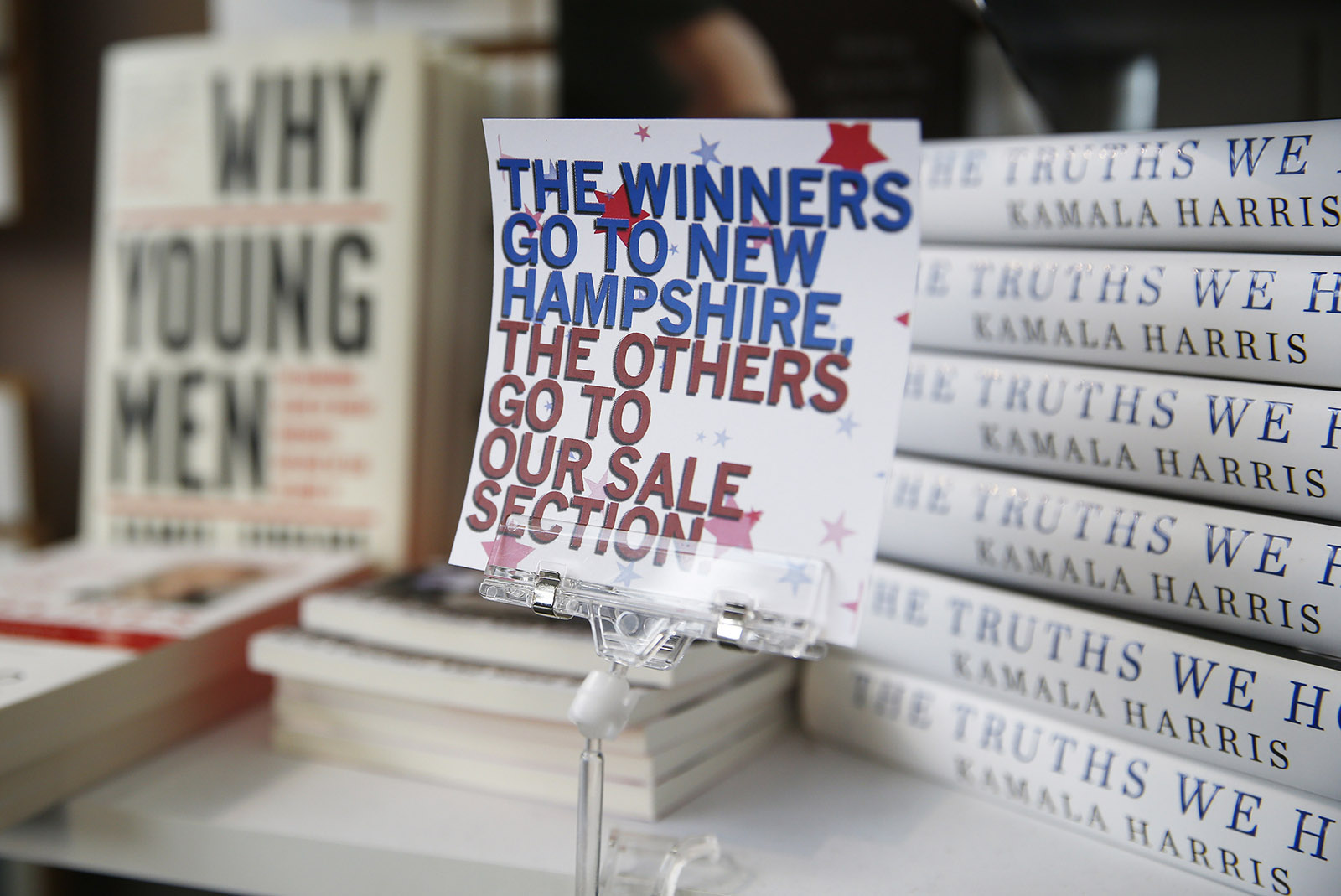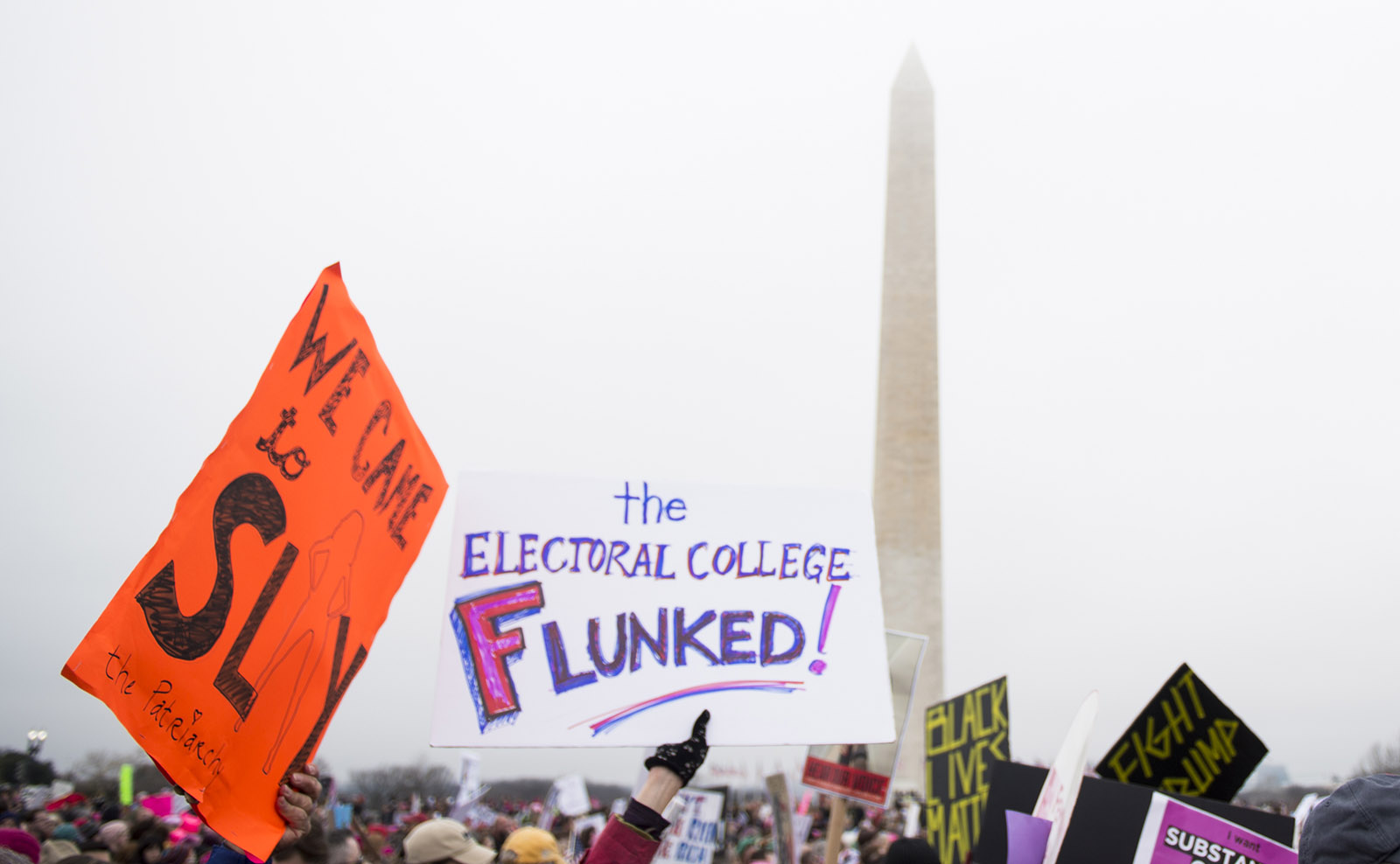It has been more than two weeks since the Iowa caucuses, and we still don’t know who won. That should give us pause. We don’t know in part because of a combination of technological failing and human error. But we’re also in the dark for a political reason. That should give us further pause.
No one disputes that Bernie Sanders won the most votes in Iowa. Yet Pete Buttigieg has the most delegates. While experts continue to parse the flaws in the reporting process, the stark and simple fact that more voters supported Sanders than any other candidate somehow remains irrelevant, obscure.
America’s democratic reflexes have grown sluggish. Not only has the loser of the popular vote won two out of the last five presidential elections, but come November, he may win a third. Like the children of alcoholics, we’ve learned to live with the situation, adjusting ourselves to the tyranny of its effects. We don’t talk anymore about who will win the popular vote in the coming election. We calculate which candidate will win enough votes in the right states to secure a majority in the Electoral College. Perhaps that’s why the scandal coming out of Iowa is the app that failed and the funky math of the precinct counters—and not the democratic embarrassment that the winner of the most votes doesn’t automatically win the most delegates.
*
In the original edition of his definitive history The Right to Vote, which came out two months before the 2000 election, Harvard scholar Alexander Keyssar never mentioned the Electoral College. Trying, in an afterword he wrote later, to account for his omission, Keyssar explained that before the election, he didn’t think the Electoral College had much to do with voting rights. He thought of it simply as a “device for aggregating” the popular vote.
At the time, this was an understandable belief. (Keyssar has since devoted himself to writing what is likely to be the definitive history of the Electoral College. It is scheduled to be published in June.) Not since 1888 had a candidate won the presidential election while losing the popular vote. So insignificant had the Electoral College become by 2000 that CBS News had to remind people on the eve of the election that the Electoral College wasn’t an “institution of higher learning” but the means by which the president is chosen. A relic of the nineteenth century, the divergence between the electoral vote and the popular vote was unlikely in the twentieth and twenty-first.
Like the Electoral College, the Iowa caucuses don’t aggregate people’s votes; they weigh them, assigning different values to the votes depending on where they are cast. Much has been made of the alchemy whereby support for a candidate is converted into “state delegate equivalents,” or SDEs. Less attention has been paid to the fact that the number of SDEs each caucus is assigned and distributes among the candidates depends not on the size of the local population or turnout at the caucus but on a formula biased toward rural parts of the state. In 2016, forty-five citizens in remote, sparsely populated Fremont County could effectively select one SDE. In more populous Jefferson County, it required two hundred and thirteen citizens to select one SDE. That’s how it’s possible to win the popular vote and lose Iowa—even if the app works fine and the caucus chairs are good at math.
“The basic principle of representative government,” the US Supreme Court declared in 1964, is that “the weight of a citizen’s vote cannot be made to depend on where he lives.” In Iowa, as in other parts of the American constitutional order, that principle is not in effect.
*
Even with their acceptance of slavery and a highly restricted franchise, many of the Framers were uneasy about the notion that some people’s votes might count more than others. When one group of delegates proposed that each state, regardless of the size of its population, should have an equal vote in Congress, James Madison denounced the plan as “confessedly unjust,” comparing it to the scheme of “vicious representation in Great Britain.” State-based apportionment, claimed Pennsylvania’s James Wilson, would only reproduce the inequality of Britain’s rotten boroughs, where a nearly depopulated Old Sarum—described at the time as sixty acres without a home—had two representatives in Parliament, while London, with 750,000 to one million residents, had four.
Madison and Wilson lost that debate; the United States Senate is the result. Within a year of the ratification of the Constitution, the 50,000 free residents of Delaware, the least populous state in the nation, had the same number of senators as the 455,000 free residents of Virginia, the most populous state. That makes for a ratio of power of nine to one. Today, according to a recent report by the Roosevelt Institute, that ratio has expanded to sixty-seven to one. Wyoming’s 583,000 residents enjoy as much power in the Senate as the nearly 40 million residents of California. (In the Electoral College, the power ratio is four to one.)
Advertisement
Eighteen percent of the American population—on average, whiter and older than the rest of the population—can elect a majority of the Senate. If those senators are not united in their opposition to a piece of legislation, the filibuster enables an even smaller group of them, representing 10 percent of the population, to block it. Should legislation supported by a vast majority of the American people somehow make it past these hurdles, the Supreme Court, selected by a president representing a minority of the population and approved by senators representing an even smaller minority, can overturn it.
The problem of minority rule, in other words, isn’t Trumpian or temporary; it’s bipartisan and enduring. It cannot be overcome by getting rid of the filibuster or racist gerrymanders—neither of which have any basis in the Constitution—though both of these reforms would help. It’s not an isolated embarrassment of “our democracy,” restricted to newly problematic outliers like the Electoral College and the Iowa caucuses. Minority rule is a keystone of the constitutional order—and arguably, given the constitutional provision that “no state, without its consent, shall be deprived of its equal suffrage in the Senate,” not eliminable, at least not without a huge social upheaval.
*
In the second half of the twentieth century, the United States had two extremely close presidential elections: 1960 and 1968. Given how effectively the Soviet Union propagandized about American apartheid, prodding US officials to push for desegregation in order to avoid bad publicity in the decolonizing world, it’s not inconceivable that the cold war also may have helped prevent those elections from producing awkward splits between the electoral vote and the popular vote. If American elites feared that the tyranny of a white majority couldn’t withstand scrutiny in the Global South, what kind of legitimation crisis might the tyranny of a white minority have provoked? As the United States today approaches a multiracial majority, the tyranny of a white minority is precisely what we are hurtling toward, without the countervailing pressure of an ideologically challenging superpower to shame us into stopping it.
It was also during the cold war that the United States grew increasingly uncomfortable with the rotten boroughs of the American South. “To say that a vote is worth more in one district than in another,” the Supreme Court declared in Wesberry v. Sanders (1964), would “run counter to our fundamental ideas of democratic government.” Though malapportionment in the South produced power ratios—three to one in Georgia, forty-one to one in Alabama—that seem quaint in light of today’s Senate, they were sufficiently large to provoke Chief Justice Earl Warren, in Reynolds v. Sims (1964), to spell out, in simple numerical terms, the challenge they posed to basic principles of democratic morality.
“It would appear extraordinary,” wrote the chief justice, if the votes of citizens in one part of a state were “given two times, or five times, or ten times the weight of votes of citizens” in another part of the state. That would mean that the first group of citizens “could vote two, five, or ten times for their legislative representatives” while the second group “could vote only once.” Under such a scheme of representation, the right to vote would not be “the same right” for all citizens. “To sanction minority control” of a legislative body “would appear to deny majority rights in a way that far surpasses any possible denial of minority rights.”
Warren clearly was worried about the implications of his argument for federal institutions like the Electoral College and the Senate. That is why he devoted several pages of his opinion to a preemptive rebuttal of “the so-called federal analogy.” Much of Warren’s rebuttal depended on the invocation of history. The apportionment scheme of the Senate and the Electoral College was a necessary compromise “arising from unique historical circumstances” of thirteen sovereign states contracting to form a national government. That claim from history sits uneasily with Warren’s claim, later in the opinion, that “history alone” is not a “permissible factor” in justifying departures from one-person, one-vote, that “citizens, not history or economic interests, cast votes.”
More important, however, is the history Warren invoked. Like the court’s other liberal justices, Warren cast the constitutional settlement over representation as a compromise between large and small states. As the Yale legal scholar Akhil Reed Amar has noted, this is “the stodgy version” of constitutional history that many of us grew up with. The less stodgy and increasingly accepted version holds that the battles over representation at the Convention had more to do with slavery than the size of states. As Madison pointed out, “the real difference of interests” at the Convention “lay, not between large and small but between Northern and Southern States. The institution of slavery and its consequences formed the line of discrimination.”
Advertisement
It’s clear why such historical truths could not be acknowledged during the cold war. Given the centrality of the Senate to Jim Crow and the near impossibility of eliminating the Senate, as well as the improbability of reforming the Electoral College, it made sense to describe these institutions as musty and ancient compromises between large and small states. In the 1960s, ironically, anachronism was less threatening than relevance. Now that the cold war is over, however, we can admit these truths. Now that the cold war is over, that may not matter.
*
We are at a strange moment in American history. On the one hand, the country has never been more interested in, and desperate to know, what the majority wants. As the rise of data geeks like the two Nates—Silver of fivethirtyeight.com and Cohn of The New York Times—and outlets like Vox show, our appetite for polling is ravenous; our capacity to digest the results, prodigious. On the other hand, we have an electoral system that makes it ever more difficult to determine the will of the majority, and a political system that makes that will ever more difficult to enact. Something’s gotta give.
Or not. In her 1997 collection of critical essays The End of the Novel of Love, Vivian Gornick remarks on that “climactic moment” in a John Cheever story “when the husband realizes his wife holds him in contempt, or the wife knows the husband is committing adultery.” With mounting dread, the reader wonders how either character can go on after this moment of truth. What makes the story truly “large, awesome, terrible,” however, is when the reader realizes that the characters do “go on like this.” That moment of truth leaves the reader “staring into space, the void opening at her feet.”




